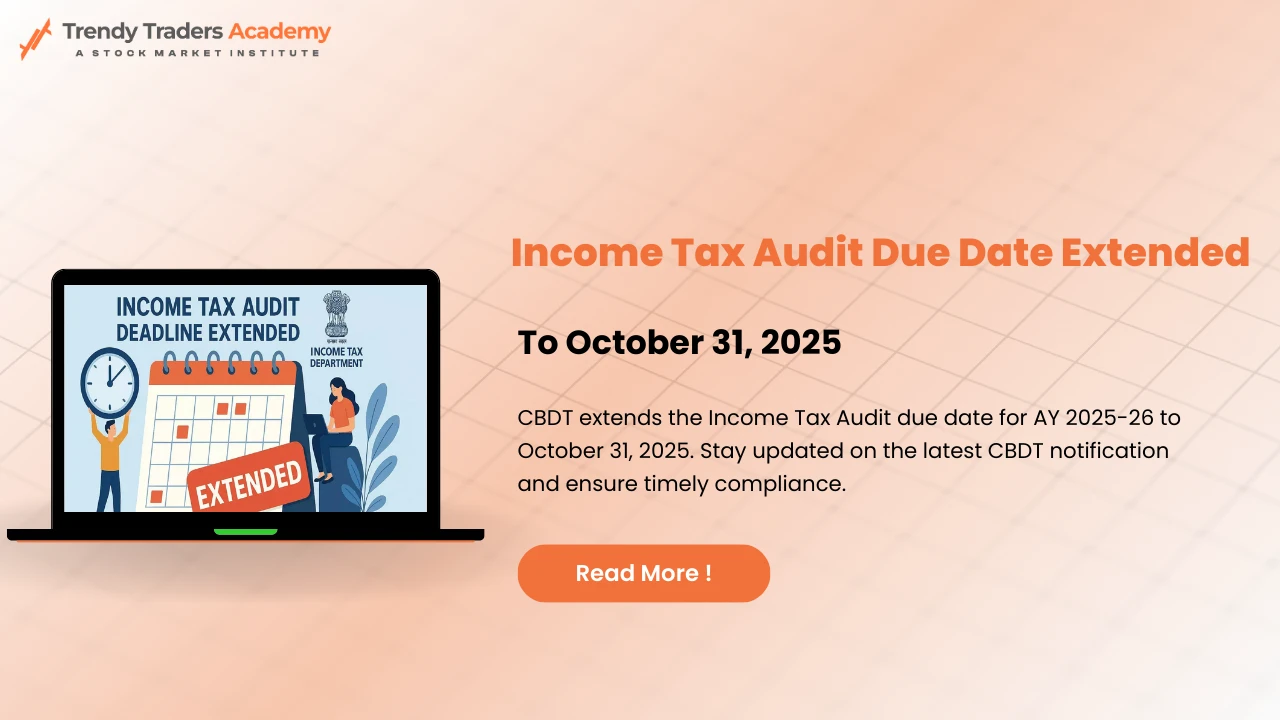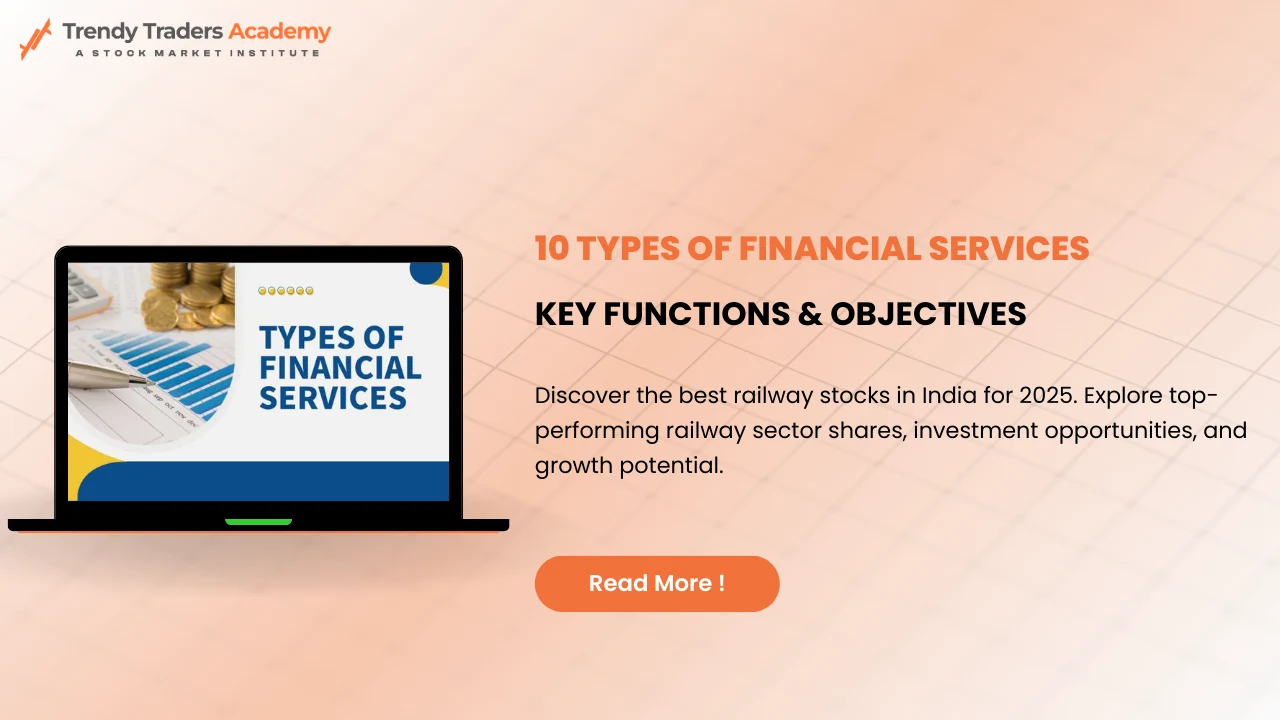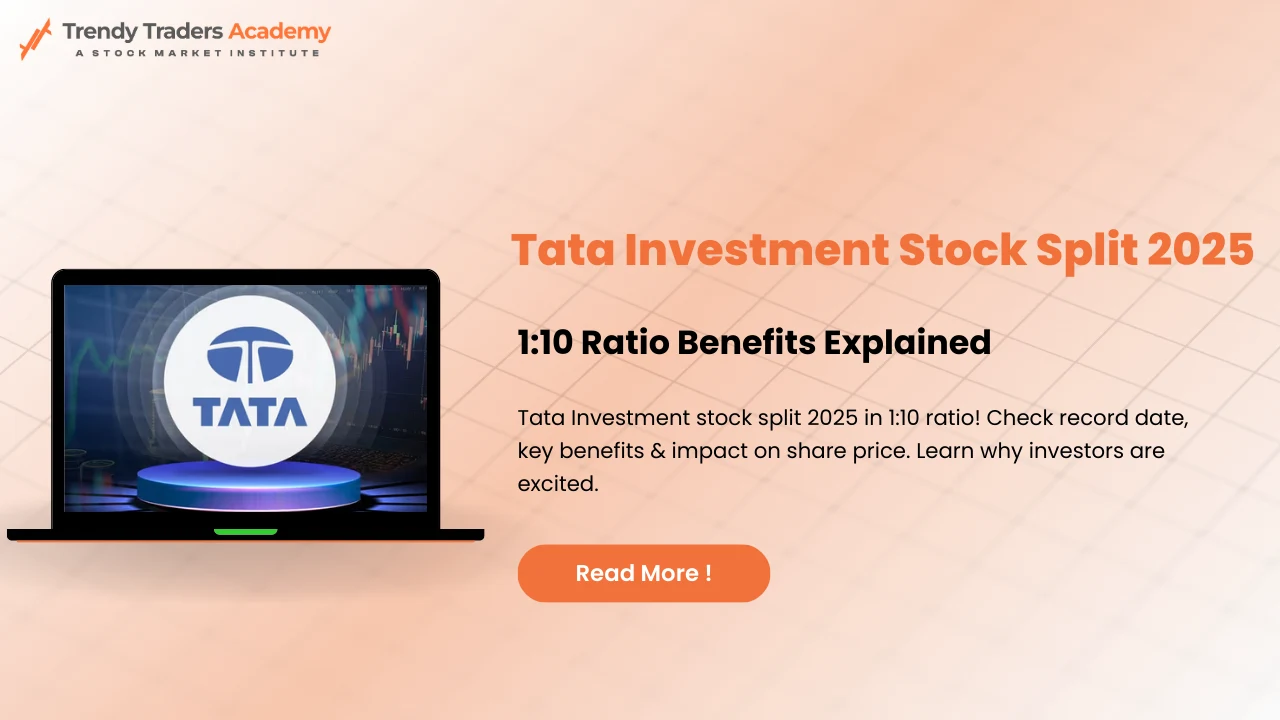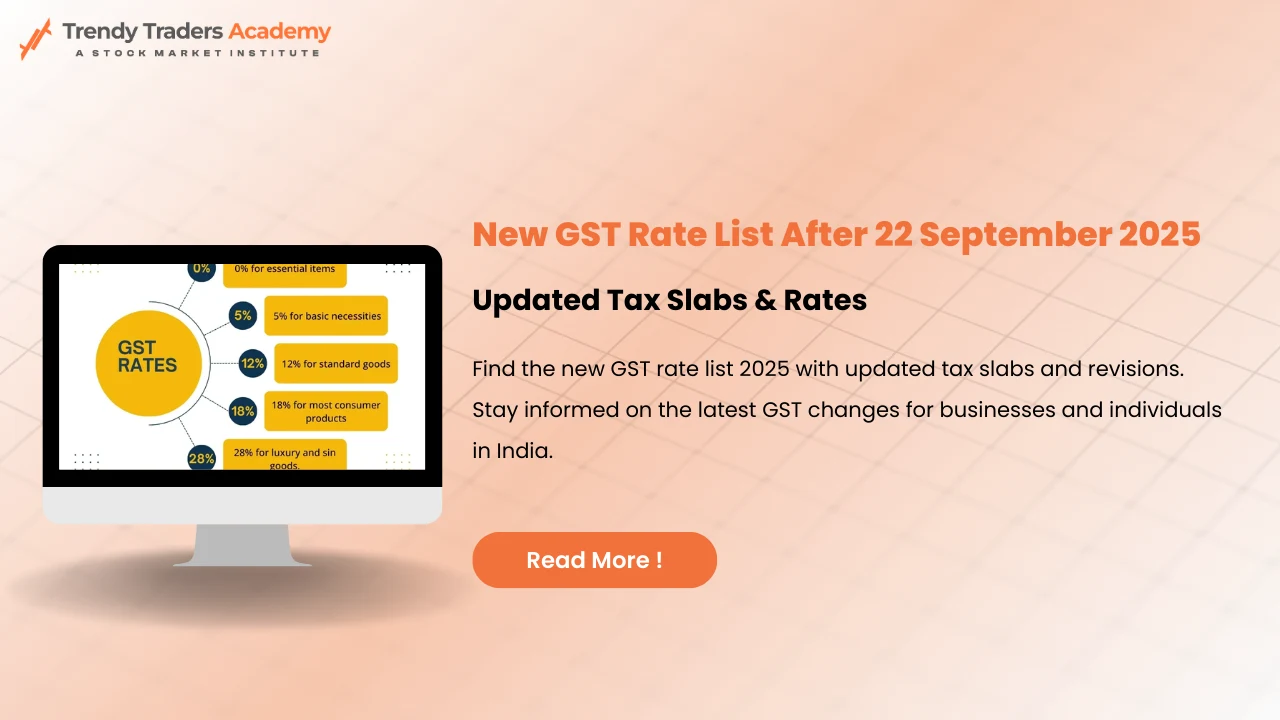
Top 10 Best High Book Value Stocks To Watch in 2025
Have you ever asked how to find out the real value of a company apart from the price of its shares? That is the role of book value in the stock market. It gives an idea of the company’s net worth by subtracting liabilities from assets. Investors check this number to see if a stock is overvalued or undervalued in the market.
In this guide, you will learn about book value per share, book value formulas, and the variation between market and book values so you can make smarter investment decisions.
What is Book Value in Stock Market?
Since Book value liabilities are taken away from assets, book value reflects what the company is worth. It tells how much money each shareholder could get if the company was sold and liquidated.
Key Points to Remember
It’s an accounting measure, not a market-driven figure.
It reflects company net worth, excluding external factors like investor sentiment.
Helpful for identifying undervalued stocks, especially in asset-heavy industries.
Market vs Book Value: What's the Difference?
Many investors confuse market value with book value, but they’re completely different metrics!
Factor | Book Value | Market Value |
Definition | Net worth based on assets/liabilities | Price determined by investors |
Influences | Accounting records | Investor sentiment & economic conditions |
Volatility | Stable, changes slowly | Fluctuates daily based on demand/supply |
Investment Insight | Helps find undervalued stocks | Shows real-time company perception |
Book value gives you an accounting-based perspective on company worth.
Market value shows what people are willing to pay for the stock.
Book Value Formula:
Book Value=Total Assets−Total Liabilities
To determine book value per share, use:

How to Calculate Book Value Per Share?
Example Calculation:
Total Assets: ₹500 crore
Total Liabilities: ₹200 crore
Total Outstanding Shares: 10 crore

So, each share of the company has a book value of ₹30 according to its net assets. If shares are being traded for less than ₹30, they could be undervalued.
Some analysts do not include things like goodwill and patents, as they aren’t realizable during a company liquidation. Doing this helps show the real value of the company’s assets.
Important Points to Spot Stocks with High Book Value
See if the book value is more or less than the market price.
A stock price that is above book value may mean investors think the company’s earnings will grow in the future.
Shares whose market price is under book value could be cheap, but more research is needed.
Debt-to-Equity Ratio
Firms having high book value and little debt are usually good options for steady long-term investments.
High book value together with a lot of debt can confuse the real financial status of a company.
Revenue and Profitability Trends
An increase in book value alongside steady and strong profits, along with revenue, means the company is financially robust.
A falling book value can mean the company’s assets are losing value or it is facing financial troubles.
4. Industry Performance Matters
Manufacturing and financial sectors often have high book value stocks due to tangible assets.
Technology companies may have low book value but high growth potential, making book value less relevant.
5. Growth Potential of the Company
A company with high book value per share should also show future expansion opportunities.
Best High Book Value Stocks in India
1. Richa Info Systems Ltd
2. Margo Finance Ltd
3. KJMC Financial Services Ltd
4. Gajanan Securities Services Ltd
5. HB Portfolio Ltd
6. SMIFS Capital Markets Ltd
7. Trigyn Technologies Ltd
8. Taparia Tools Ltd
9. United Interactive Ltd
10. Times Green Energy India Ltd
Top 10 High Book Value Stocks in India
Here are some high book value stocks that investors should watch. These companies have strong financial fundamentals and could offer value-based investment opportunities.
1. Richa Info Systems Ltd
Industry: Office, Accounting & Computing Machinery
Overview: Founded in 2010, specializing in manufacturing equipment.
Investment Potential: Strong book value indicates significant net assets relative to market price.
Richa Info has a strong book value of ₹418.44, making it attractive from a value investing standpoint.
A low Debt/Equity ratio of 0.08 shows strong financial health.
Posted a quarterly net profit of ₹4.81 Cr, with profit growth of 968.89% and sales of ₹117.04 Cr, up 294.61%.
With a market cap of ₹20.78 Cr, it presents significant growth potential in the small-cap segment.
2. Margo Finance Ltd
Industry: Financial Services
Overview: Debt-free company with solid asset value, despite lower return on capital employed.
Investment Potential: May be undervalued, requiring further analysis of financial growth.
Margo Finance is completely debt-free and has a high book value of ₹391.82.
Despite a low ROCE of 0.39%, it has shown 100% quarterly sales growth with revenue of ₹0.16 Cr.
The net profit is stable at ₹-0.05 Cr, and its market cap is ₹34.79 Cr.
Suitable for investors seeking undervalued, asset-backed financial stocks.
3. KJMC Financial Services Ltd
Industry: Investment & Advisory Services
Overview: Low debt-to-equity ratio and high book value make it attractive for value investors.
KJMC Financial boasts a solid book value of ₹375.43 and a very low Debt/Equity of 0.05.
It posted ₹0.03 Cr in net profit and ₹1.27 Cr in quarterly sales, showing 17.59% sales growth.
ROCE is modest at 1.83%, and the market cap stands at ₹43.57 Cr.
It appeals to conservative, value-focused investors.
4. Gajanan Securities Services Ltd
Industry: Financial Services
Overview: Established in 1994, specializing in brokerage and investment advisory.
Investment Potential: Declining revenue but low debt and strong book value offer potential.
With a book value of ₹370.05 and zero debt, Gajanan Sec. Serv offers strong intrinsic value.
It reported a slight quarterly loss of ₹-0.03 Cr and negative revenue movement (₹-0.01 Cr), with sales down -133.33%.
Despite weak performance, its market cap of ₹25.81 Cr and strong asset base may provide downside protection.
5. HB Portfolio Ltd
Industry: Investment & Finance
Overview: Zero debt and strong asset base, making it ideal for conservative investors.
HB Portfolio is debt-free and has a healthy book value of ₹278.52.
Although it reported a loss of ₹-0.86 Cr, quarterly sales reached ₹9.73 Cr with a 62.71% increase.
Offers a dividend yield of 1.07% and has a market cap of ₹100.12 Cr.
Ideal for low-risk investors looking for steady asset-backed investments.
6. SMIFS Capital Markets Ltd
Industry: Merchant Banking & Financial Services
Overview: SEBI-registered Category-I Merchant Banker with high book value.
Investment Potential: Low debt-to-equity ratio strengthens financial stability.
Registered as a SEBI Category-I Merchant Banker, SMIFS Capital has a book value of ₹271.35.
It carries minimal debt (Debt/Equity of 0.01) and a market cap of ₹51.22 Cr.
Quarterly profit stands at ₹0.25 Cr with ₹7.38 Cr in sales, though there was a -96.52% drop in sales.
ROCE is low at 0.58%, but the business model offers scope for cyclical upswings.
7. Trigyn Technologies Ltd
Industry: Information Technology
Overview: Global IT service provider with consistent earnings growth.
Investment Potential: High book value per share indicates strong fundamentals.
Trigyn Technologies has a book value of ₹231.31, and very low leverage (Debt/Equity 0.01).
It posted a quarterly net profit of ₹1.23 Cr and strong revenue of ₹206.78 Cr, up 105.59% YoY.
ROCE stands at 5.72% with a market cap of ₹236.63 Cr, making it the largest company on this list.
A consistent performer in the IT space with global operations.
8. Taparia Tools Ltd
Industry: Manufacturing (Hand Tools)
Overview: Established in 1969, with high return on capital and export presence.
Investment Potential: Strong book value and stable revenue growth enhance attractiveness.
Taparia Tools offers immense value with a book value of ₹228.63 and zero debt.
It reported an impressive quarterly profit of ₹30.55 Cr and revenue of ₹234.90 Cr, up 12.62%.
With an exceptional ROCE of 43.95% and market cap of ₹28.85 Cr, this is one of the strongest financially.
Well-suited for investors seeking fundamentally strong, asset-backed manufacturing companies.
9. United Interactive Ltd
Industry: IT & Software Development
Overview: High book value with low debt, reflecting potential for long-term value investing.
United Interactive has a book value of ₹209.89 and is a debt-free micro-cap.
It posted a net profit of ₹0.26 Cr, though quarterly sales were nil, with 1000% profit growth, likely from non-operational income.
With a market cap of ₹16.83 Cr, this company may interest speculative investors looking for deep value.
10. Times Green Energy India Ltd
Industry: Agriculture, Women Hygiene, and E-Commerce
Overview: Diversified business with organic fertilizers, hygiene products, and e-commerce.
Investment Potential: Strong asset base and high book value indicate business expansion opportunities.
Times Green Energy holds a book value of ₹206.79 and is diversified into agriculture, hygiene, and e-commerce.
Quarterly profit was ₹0.16 Cr and sales were ₹10.06 Cr, though down -38.46%.
It has a market cap of ₹12.48 Cr and an ROCE of 2.31%.
A small-cap opportunity in emerging sectors, with room for future growth.
High Book Value Stocks : Company , Industry , key features
Company Name | Industry | Key Features |
Richa Info Systems Ltd | Office, Computing Machinery | Strong asset base, potential undervaluation |
Margo Finance Ltd | Financial Services | Debt-free, solid book value |
KJMC Financial Services Ltd | Financial Advisory | Low debt-to-equity ratio, attractive for value investors |
Gajanan Securities Services Ltd | Financial Services | High book value, low debt, requires revenue analysis |
HB Portfolio Ltd | Investment & Finance | Zero debt, strong asset base |
SMIFS Capital Markets Ltd | Merchant Banking | SEBI-registered firm with high book value |
Trigyn Technologies Ltd | IT Services | Global technology company with consistent earnings growth |
Taparia Tools Ltd | Manufacturing | High return on capital and strong export presence |
United Interactive Ltd | Software Development | High book value, low debt |
Times Green Energy India Ltd | Agriculture, E-commerce | Diversified revenue sources with strong asset base |
Investment Strategies for High Book Value Stocks
1. Look for Stocks Trading Below Book Value
If a stock less than book value than book value, it may be undervalued.
Ensure the company has strong fundamentals before investing.
2. Use Price-to-Book (P/B) Ratio for Analysis
Formula:

P/B ratio above 1: Indicates market confidence and growth prospects.
P/B ratio below 1: Could signal undervaluation but requires further financial review.
P/B ratio above 1: Indicates market confidence and growth prospects.
P/B ratio below 1: Could signal undervaluation but requires further financial review.
3. Compare ROE with Book Value Growth
ROE Formula:

A company with high ROE and growing book value is financially strong.
Declining book value with stable ROE may suggest reinvestment into business expansion.
4. Look for Consistency in Book Value Growth
A company that maintains rising book value over multiple years is financially stable.
Declining book value could indicate poor asset utilization or financial struggles.
5. Analyze Industry Trends
Compare book value across companies in the same industry to gauge relative strength.
High book value penny stocks or high book value low price stocks in manufacturing and finance may have different valuation models than tech-based firms.
Limitations of Using Book Value for Stock Investments
While book value is a useful metric, it has certain drawbacks:
Ignores intangible assets (brands, patents, goodwill).
Doesn’t factor in growth potential, only past records.
Not ideal for tech companies, which rely more on intellectual property than physical assets.
Best used for asset-heavy industries like banking, manufacturing, and real estate.
Conclusion
Investing in high book value penny stocks provides financial stability and potential upside, especially if undervalued. Understanding how to calculate book value per share, debt levels, and sector trends ensures smarter investment choices. Whether selecting high book value penny stocks or high book value low price stocks, verifying fundamentals and growth potential is key.
Also Read : Bajaj Finance Share Price 2025 – Fundamental Analysis
Also Read: 16 Key Difference Between Stock Market and Mutual Fund
FAQ'S
What are high book value stocks?
High book value stocks are shares of companies where the book value per share (BVPS) is significantly high compared to others in the same sector. These companies often have strong asset bases, minimal debt, and stable earnings, making them attractive for long-term investors seeking undervalued opportunities.
What are high book value penny stocks?
High book value penny stocks refer to low-priced stocks (typically under ₹100) that have a book value higher than their market price. These can be opportunities for value investors, but they come with higher risk due to low liquidity and weaker financial stability compared to blue-chip stocks.
What are high book value low price stocks?
These are stocks trading at low prices but have book values much higher than their current market prices. Such stocks may indicate undervaluation and can potentially offer strong returns if the market revalues them appropriately. Always analyze debt levels, management quality, and earnings consistency before investing.
What does it mean when a stock is trading for less than book value?
When a stock trades below its book value, it means the market is valuing the company less than the net worth of its assets. This might indicate undervaluation or a lack of investor confidence due to low profits, governance issues, or future uncertainty. Some value investors consider this a buying opportunity if fundamentals are strong.
How to calculate book value per share?
You can calculate Book Value Per Share (BVPS) using the formula:
Book Value Per Share = (Total Assets – Total Liabilities) / Total Number of Outstanding Shares
✅ Example:
If a company has ₹500 crore in assets and ₹200 crore in liabilities, with 10 crore shares outstanding:
- BVPS = (500 – 200) / 10 = ₹30 per share
- This means each share is backed by ₹30 worth of net assets.











